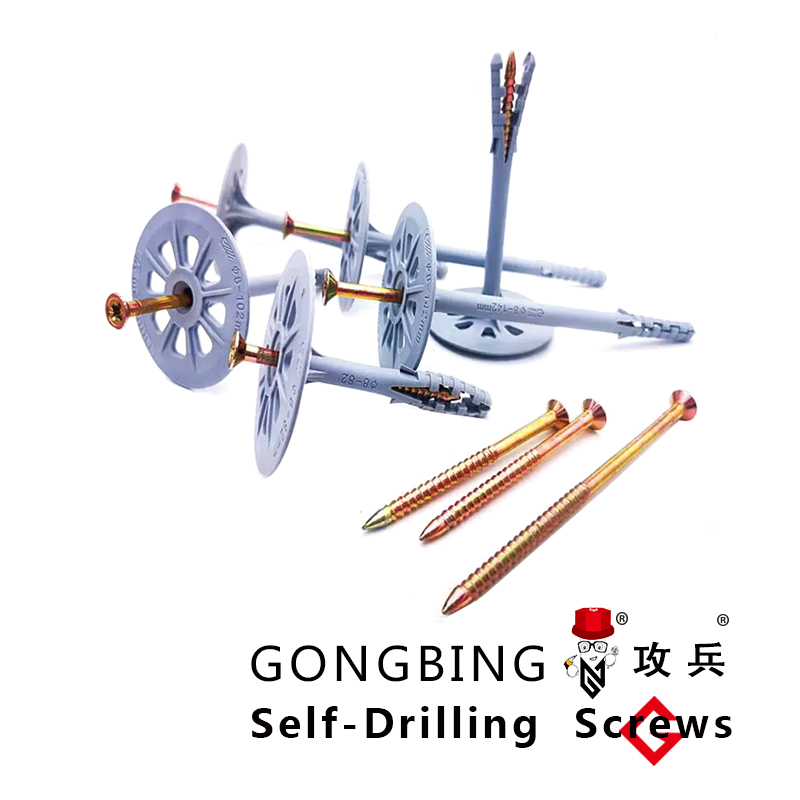chemical fixing anchors
Chemical Fixing Anchors An In-Depth Overview
In the construction and engineering world, ensuring structural integrity and safety is paramount. One of the core components that contribute to this integrity is the anchoring systems used in various applications. Among the many types of anchors available, chemical fixing anchors have gained significant attention for their strength, versatility, and reliability. This article delves into the intricacies of chemical fixing anchors, their benefits, applications, and the principles behind their operation.
What Are Chemical Fixing Anchors?
Chemical fixing anchors, sometimes referred to as chemical anchors or resin anchors, are anchoring systems that utilize a chemical adhesive to bond the anchor directly to the substrate, usually concrete or masonry. Unlike mechanical anchors, which rely on physical expansion or grip to hold in place, chemical anchors create a strong bond through chemical reactions that occur between the anchor and the adhesive.
The anchor system typically consists of three main components the base metal (usually steel), the adhesive (often a two-part resin), and the anchor sleeve or bolt. When installed correctly, this combination results in superior load-bearing capacity and resistance to environmental factors such as moisture and temperature fluctuations.
Advantages of Chemical Fixing Anchors
1. High Load-Bearing Capacity One of the most significant advantages of chemical anchors is their ability to handle heavy loads. The chemical bond formed between the adhesive and the substrate allows for higher tensile and shear strength compared to many mechanical anchors.
2. Resistance to Vibration and Dynamic Loads Chemical anchors perform exceptionally well in applications subject to vibration or dynamic loads, such as machinery or high-traffic areas. The flexible nature of the resin helps absorb impacts and reduces the risk of anchor failure.
3. Versatility These anchors can be used in a variety of materials beyond concrete, including brick, block, and even hollow materials. This versatility makes them suitable for diverse construction applications and allows for effective use in challenging conditions.
4. Corrosion Resistance In environments that expose anchors to moisture or chemicals, chemical fixing anchors demonstrate greater resistance to corrosion than conventional anchors. The protective properties of the resin help ensure longevity and reduce maintenance costs.
5. Ease of Installation The installation process for chemical anchors is generally straightforward. After drilling a hole to the specified diameter and depth, the adhesive is injected into the hole, and the anchor is then inserted. As the adhesive cures, it forms a robust bond.
chemical fixing anchors

Applications of Chemical Fixing Anchors
Chemical fixing anchors are used in a wide range of construction and engineering applications, including
- Structural Supports They are commonly applied in high-load scenarios such as supporting beams, steel columns, and heavy machinery. - Renovation Projects When retrofitting or repairing existing concrete structures, chemical anchors provide reliable support without the need for extensive modifications. - Facade Attachment In building exteriors, these anchors can secure panels and cladding systems due to their adaptability to various base materials. - Infrastructure Works From bridges to tunnels, chemical anchors play a crucial role in ensuring consistent load distribution and stability.
Installation Considerations
While chemical fixing anchors offer numerous advantages, installation must be approached with precision and care. Key factors to consider include
- Substrate Condition The surface must be clean and free of debris, oil, or moisture to ensure optimal bonding.
- Curing Time Different adhesives have varying curing times, which can affect the load-bearing capacity during installation. It's essential to adhere to the manufacturer's guidelines for curing prior to applying load.
- Temperature Effects The performance of resin-based adhesives can be influenced by temperature, so it's crucial to consider ambient conditions during installation.
Conclusion
Chemical fixing anchors represent an innovative solution to anchoring challenges faced in modern construction. Their exceptional strength, versatility, and resilience to environmental factors make them essential components in ensuring the longevity and safety of structures. As technology advances, the development of even more effective and specialized chemical anchors is likely, opening the door for further applications across various sectors. Whether for new construction or renovations, understanding the benefits and proper applications of chemical fixing anchors can significantly improve outcomes and enhance structural integrity.
-
Weatherproof Plastic Expansion Anchors for OutdoorNewsJun.06,2025
-
Sustainability in the Supply Chain: Eco-Friendly TEK Screws ProductionNewsJun.06,2025
-
Load-Bearing Capacity of External Insulation FixingsNewsJun.06,2025
-
Double Head Bolts: Enhancing Efficiency in Industrial MachineryNewsJun.06,2025
-
Corrosion Resistance in Chipboard Screws: Coatings for Wholesale DurabilityNewsJun.06,2025
-
Butterfly Toggle Bolts : Enhancing Structural ResilienceNewsJun.06,2025
